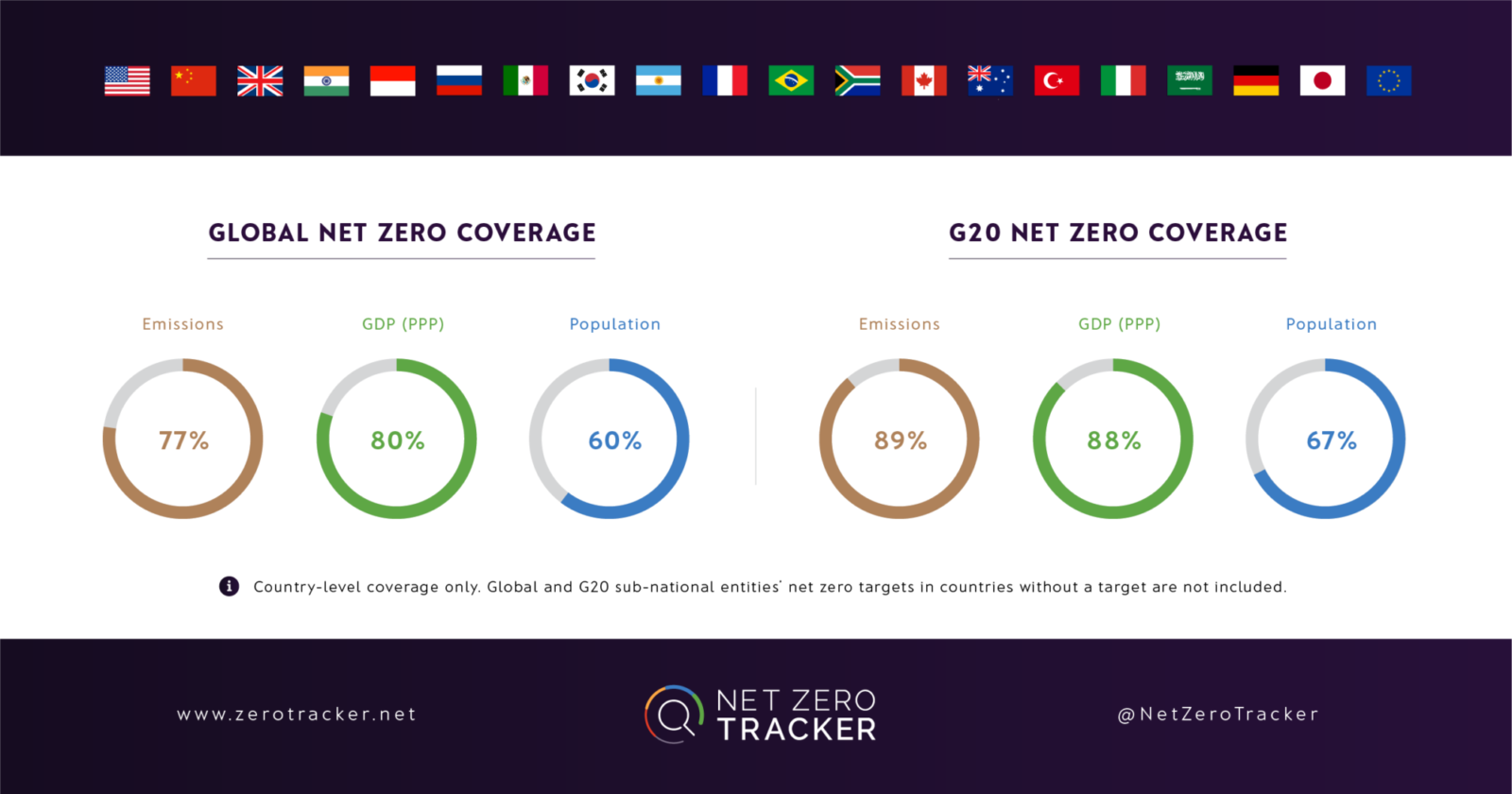The end of the beginning of net zero
At the outset of COP26 now that ‘net zero’ has become nearly universal, it must become universally robust, argue ECIU's Richard Black and University of Oxford professor Thomas Hale.
5 NOV 2021

5th November 2021
A lifeline to a 1.5-degree world
If you'd told delegates to the Paris climate summit in 2015 that in six years' time 90 per cent of global GDP and 88 per cent of global greenhouse gas emissions would be covered by net zero pledges, they would have been astonished. But that's the reality.
The uptake of net zero targets has been blindingly fast, but it comes not a moment too soon. The science is clear that radically reducing global emissions to a tiny fraction of their current level, and then permanently neutralizing the small residual that may remain, is our best hope of a 1.5℃ pathway. Put simply, until we reach global net zero, climate change will continue to worsen.
Net zero emerged in the scientific literature around 10 years ago, and was pushed into the Paris Agreement by activists and vulnerable countries as a "balance between sources and sinks". Now, net zero is well into the process of operationalization, which requires a further shift from announcements to plans, and from pledges to rules.
Not all net zero pledges are created equal
Since Paris, net zero pledges have exploded. Countries, companies, business, regions, investor groups, universities are all saying they are going to net zero. However, not all net zero pledges are created equal. Some include all emissions; some don't. Some rely on accounting sleight of hand; some don't. Some entail short-term targets and immediate action; others don't. Some are embedded in clear plans and accountable institutions; some aren't.
The key thing is to turn the intention into a transparent, credible framework that at the very least includes a published plan, immediate emission-cutting measures and an annual reporting mechanism. Net zero plans must depend primarily on genuine carbon-cutting rather than offsetting, and for businesses, strategies should include emissions generated by the use of their products and services (so-called Scope 3 emissions).

Looking under the hood of net zero: The Net Zero Tracker
We need to make net zero not only universal, but universally robust. A requirement for that is being able to track which plans are strong, and which have work to do. That's where the Net Zero Tracker comes in, a powerful, impartial tool for benchmarking the scope and rigour of commitments made by all the most important entities setting net zero targets, which just launched. The Tracker is geared to analyse 4,000+ actors' pledges - encompassing nations, states & regions, cities and corporations - and track their evolution over time.
The Net Zero Tracker gives entities setting net zero targets the ability to benchmark themselves against science and against their peers. And it's going to give the stakeholders of those entities—their citizens, their consumers, their investors, their business partners, and their critics—a tool to push for more action.
The tracker is based on radical transparency. We use open-source documents and data to categorise net zero targets in a comparable way. At the core of this effort is not just scientific expertise, but people power - a global team of volunteers who sort through the complex array of information and put it into an analytic framework.
We need both quantity and quality to keep 1.5 alive
More targets are being set and flimsy targets are shifting to a stronger footing, but governments, and corporates must move faster, especially on reducing emissions in the short term. We have a long way to go, but the message is getting through, if governments, or corporates have set out a fully-fledged plan, they must quickly clarify how they will reach their targets: those that do so will earn plaudits if their plans are robust, while those with unviable or absent plans will face increasing criticism from all stakeholders.
Net zero targets are shifting: from intent to integrity
In the past few years, many entities mistook net zero targets as a buzzword, or even sought to co-opt the scientific concept to deflect pressure for decarbonisation. Some CEOs sought to treat net zero targets like a reputational shroud that could be thrown over a carbon intensive business, with only superficial plans to pay for offsets instead of tackling emissions. Then there were the ‘NIMTOs' - ‘Not In My Term of Office' - leaders that signed 2050 pledges without fully integrating them, leaving the challenge for their successors.
But now, we are at an inflection point on net zero target-setting - a shift from intent to integrity. From the top, there are now clear signs that national net zero commitments are getting stronger. The number of countries with net zero pledges in law has doubled since last year, rising to cover 19 per cent of global GDP, up from six per cent last year.
Alongside governments, the number of large firms in G20 countries setting clearer targets has doubled from five per cent to ten per cent in the last 11 months. To date, 184 of the 2,000 largest multinationals are setting the pace in the race to zero, having set net zero targets that meet basic standards of quality.
We really are in a race to zero. The Net Zero Tracker is giving us the scorecard, to help us all sprint faster.
——
Richard Black is senior associate at the Energy & Climate Change Intelligence Unit (ECIU), and Thomas Hale is professor of global public policy at the University of Oxford's Net Zero Initiative.
This article was first published in BusinessGreen on 4 November 2021.